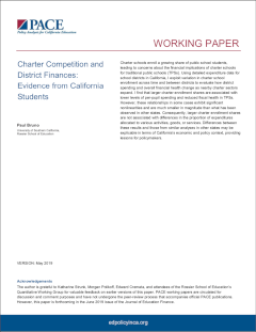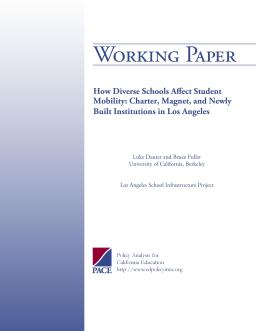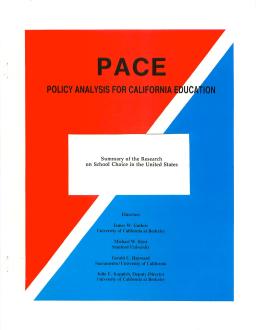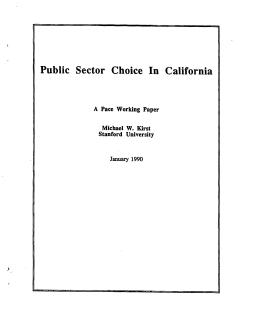Evidence from California
Published
Summary
This paper examines how the growth of charter schools affects traditional public schools' financial health in California. The study finds that higher charter enrollment is associated with lower per-pupil spending and fiscal health in traditional public schools, but the effects are smaller than in other states. However, the proportion of expenditures allocated to different activities, goods, or services does not differ. The paper provides lessons for policymakers and suggests that California's economic and policy context may explain the differences from similar analyses in other states.
Charter, Magnet, and Newly Built Campuses in Los Angeles
Published
Summary
This paper examines the impact of pupil mobility in urban districts like Los Angeles, where families are encouraged to switch schools due to the growth of mixed-markets of charter, magnet, and pilot schools. African American and White students are more likely to exit their schools, while overcrowding in low-income Latino neighborhoods leads to higher exit rates. Charter and magnet school students exit less. The district's commitment to relieve overcrowding leads to Latino students moving to newly built schools. The opening of new high schools reduced pupil mobility.
California’s Quality Education Investment Act
Published
Summary
This working paper examines the use of Quality Education Investment Act (QEIA) funds, which allocated $2.6B over seven years to California's lowest-performing schools. The authors conducted a study of four Los Angeles high schools to investigate how QEIA dollars were spent in the first year, who made the decisions, and how funds were used to improve teaching and the instructional program. The study found that district officials and principals had discretion in allocating funds, consistent with recent efforts to deregulate categorical-aid programs and give local educators fiscal discretion.
Published
Summary
The paper provides a synthesis of existing literature on school choice, with a focus on research that informs public policy development and evaluation. It presents information without taking a position for or against school choice and is intended for policymakers, parents, educators, and the public. The paper covers six sections, including types of school choice programs, efficacy, economic theories, private schools, public opinion, and unresolved research questions.
A PACE Working Paper
Published
Summary
California saw renewed interest in the issue of education choice in the late 1980s, with 11 bills introduced in the 1989 legislative session. The primary reason for this is the reluctance to consider public aid to private schools. California State Superintendent Bill Honig proposed AB 2134, which would require parents to choose a public school each year. The politics of choice have changed, and low-cost proposals that don't promote alternative school sites have become popular. This paper analyzes the California bills and their implications for education choice in California.




